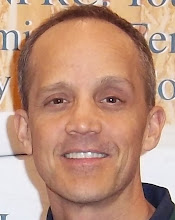Jeff Harris, Vice President of Programs for the Alliance to Save Energy (ASE) in Washington, D.C., emphasized the importance of striving for Net Zero Energy during the second day of the Energy Solutions Conference, which is being held by the Midwest Energy Efficiency Alliance (MEEA) this week at the Intercontinental Hotel in Chicago.
Harris described Net Zero Energy buildings as those that produce as much energy as they use.
According to Harris, buildings are the largest users of electricity and natural gas in the country, accounting for as much as 40% of energy costs. Furthermore, estimates suggest the amount of energy U.S. buildings consume will increase by approximately 23% by 2030.
“Obviously, we need to act now to reverse this trend,” Harris said. “We simply must do whatever it takes to greatly reduce the amount of energy buildings are consuming.”
While reversing the trend of growing energy consumption in buildings poses significant challenges, it also offers certain opportunities. These include the development of new technologies and the creation of new jobs for those who can implement these technologies.
In closing, Harris expressed his belief that many current building codes are far too static. In order to achieve Net Zero Energy, he sees the need for them to become continually more stringent.
“Today’s best practices need to become tomorrow’s baseline practices,” Harris concluded. “We’re facing a big challenge, but with a lot of hard work we will be able to create the kind of future we are merely envisioning today.”
NFRC representatives are attending MEEA’s Energy Solutions Conference to promote awareness of NFRC’s activities and programs and to call attention to the role they can play in sustainable building and energy efficiency.
The Energy Solutions Conference concludes tomorrow, Friday, January 15.
MEEA Conference
Thursday, January 14, 2010
NFRC Attending MEEA Conference, Looking to Define Role in DOE Efforts
Yesterday morning, the Midwest Energy Efficiency Alliance (MEEA) kicked off its Annual Energy Efficiency Conference at the Intercontinental Hotel in Chicago.
MEEA adopted the theme “Opportunity Now” for the conference, and its opening speaker’s message was in perfect alignment with this theme.
Dr. Kathleen Hogan, Deputy Assistant Secretary for Energy Efficiency in the Office of Energy Efficiency and Renewable (EERE) at the U.S. Department of Energy (DOE), said the stimulus package has created an unprecedented opportunity for building models of energy efficiency that can be used both now and far into the future.
Hogan said the task that lies before the DOE is to see that the stimulus funds are well spent. According to Hogan, the DOE has about $5 billion slated to improve the energy efficiency of low-income homes. This amount is expected to help weatherize approximately 700,000 homes over the next 18 months.
Hogan also highlighted the need for strong measurement and evaluation of energy savings programs to avoid duplicative efforts and said the DOE will focus heavily on leveraging existing programs into new ones. Hogan feels an important aspect of the DOE’s work is to view it as an opportunity to build a blueprint for replicating the programs that emerge as the most impactful.
“There is a tremendous amount of work underway at the DOE, and we intend to be smart about how we invest the stimulus funds,” Hogan concluded. “Our goal is not to look for temporary fixes but to find long-term solutions. We’re in the midst of a new era of opportunity for improving energy efficiency, and we’ll be working aggressively to capitalize on it.”
NFRC is attending MEEA’s conference to more clearly define specifically how its activities and programs fit in with the DOE’s work.
The MEEA conference continues today.
MEEA adopted the theme “Opportunity Now” for the conference, and its opening speaker’s message was in perfect alignment with this theme.
Dr. Kathleen Hogan, Deputy Assistant Secretary for Energy Efficiency in the Office of Energy Efficiency and Renewable (EERE) at the U.S. Department of Energy (DOE), said the stimulus package has created an unprecedented opportunity for building models of energy efficiency that can be used both now and far into the future.
Hogan said the task that lies before the DOE is to see that the stimulus funds are well spent. According to Hogan, the DOE has about $5 billion slated to improve the energy efficiency of low-income homes. This amount is expected to help weatherize approximately 700,000 homes over the next 18 months.
Hogan also highlighted the need for strong measurement and evaluation of energy savings programs to avoid duplicative efforts and said the DOE will focus heavily on leveraging existing programs into new ones. Hogan feels an important aspect of the DOE’s work is to view it as an opportunity to build a blueprint for replicating the programs that emerge as the most impactful.
“There is a tremendous amount of work underway at the DOE, and we intend to be smart about how we invest the stimulus funds,” Hogan concluded. “Our goal is not to look for temporary fixes but to find long-term solutions. We’re in the midst of a new era of opportunity for improving energy efficiency, and we’ll be working aggressively to capitalize on it.”
NFRC is attending MEEA’s conference to more clearly define specifically how its activities and programs fit in with the DOE’s work.
The MEEA conference continues today.
Subscribe to:
Comments (Atom)

